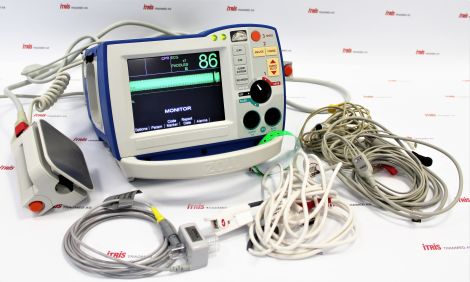
We used the Resusci® Baby QCPR (Laerdal Medical, Stavanger, Norway) as a simulated 3-month-old infant. This study was designed as a prospective randomized controlled simulation-based study. We aimed to compare the quality of chest compression and brief hands-off times in 2FT, 2TT, and CTT by a single rescuer using an infant CPR manikin model.Methods We modified the 2TT to the cross-thumb technique (CTT) to maintain good CPR performance at the same position as 2FT. The two-thumb encircling technique (2TT) is superior to the two-finger technique (2FT) in infant cardiopulmonary resuscitation (CPR), but there are difficulties in providing ventilation as soon as possible. Strategies to speed up the identification of arrhythmias should be put in place to minimise preshock pauses and improve ALS outcomes. Early identification of shockable rhythms may lead to early nurse-initiated defibrillation. Nursing students generally performed ALS within the time limits recommended by resuscitation guidelines. A strong positive correlation was found between the identification of the arrhythmia and the initiation of countershock (rs = 0.613, p < 0.001). Pauses between chest compressions were longer than recommended (mean = 0.36, standard deviation = 1.14). Students performed the scenario in an average time of 8.32 (standard deviation = 1.13) minutes. Pauses were assessed using an observation checklist. One hundred forty-two nursing students participated in this cross-sectional study, involving high-fidelity simulation scenario of cardiorespiratory arrest in a simulated hospital room. The objective of this study was to identify the pauses that occur during ALS situations in high-fidelity simulation scenarios and the frequency and duration of these pauses. A greater understanding of these pauses may help to improve the quality of advanced life support (ALS) and clinical outcomes. Prolonged preshock pauses are associated with negative effects on patient outcomes and survival. Checking a single pulse site with fingers ready on the pulse site pre-pause could decrease pause duration and improve CPR quality. Prolonged pauses in chest compressions occurred frequently during CPR and were associated with pulse checks and multiple simultaneous tasks. "Coordinated pauses" (pulse check, rhythm check and compressor change) were rare (6%) and long in duration (19 s IQR 11, 30). Pause duration was correlated with the number of pause tasks (r = 0.559, p < 0.001). 001) were associated with significantly shorter pause duration. Checking a single pulse site (p < 0.001) and having fingers ready pre-pause (p = 0. Pulse checks occurred in 23% of pauses 62% were prolonged. Median chest compression fraction was 91%, with a median pause duration of 4 s (IQR 2, 10) 22% of pauses were prolonged (>10 s). Pauses in compressions were analyzed for duration and pause activities.įrom a 30-month period, 81 cardiac arrests were analyzed, including 1003 individual compressor segments and 900 pauses.

Parameters of CPR performance were described according to individual compressor segment. Events were reviewed for AHA guideline adherence. We conducted an observational study of CPR quality in two pediatric EDs using video review during pediatric cardiac arrest. We studied the quality of pediatric CPR performed in a tertiary pediatric emergency department (ED) with a focus on pauses in chest compressions. Minimizing pauses in chest compressions during cardiopulmonary resuscitation (CPR) is recommended by the American Heart Association (AHA) and is associated with improved patient outcomes.


 0 kommentar(er)
0 kommentar(er)
